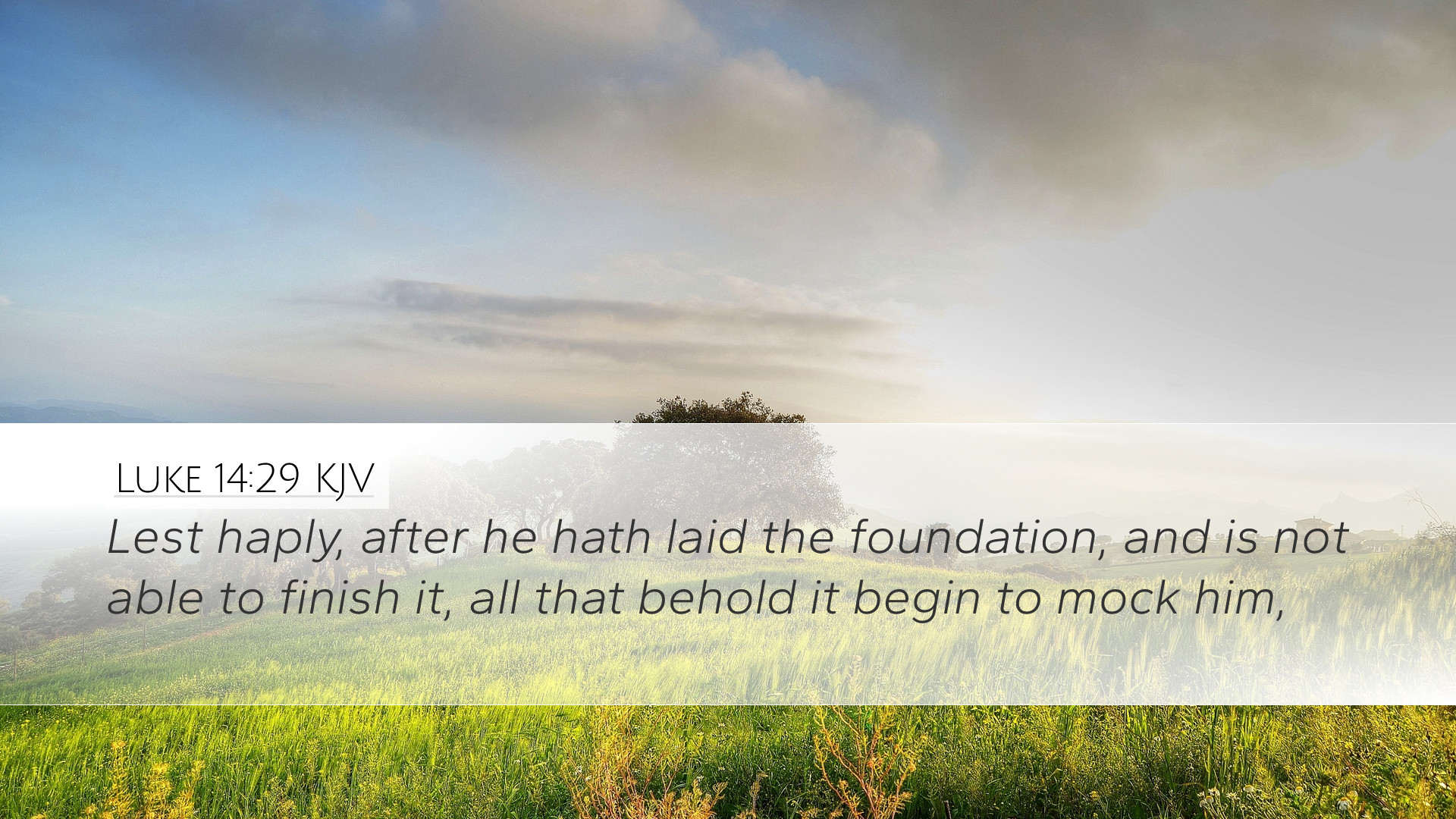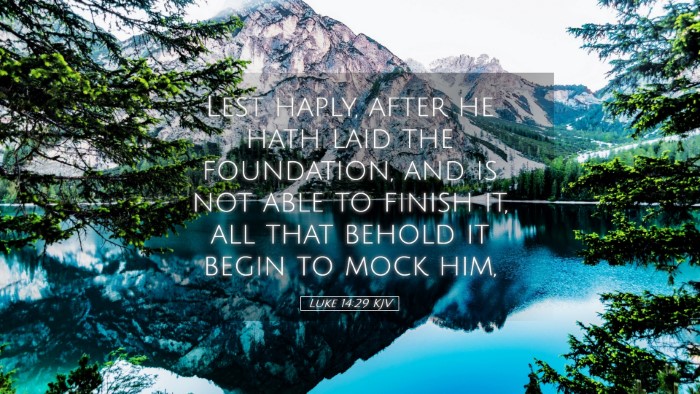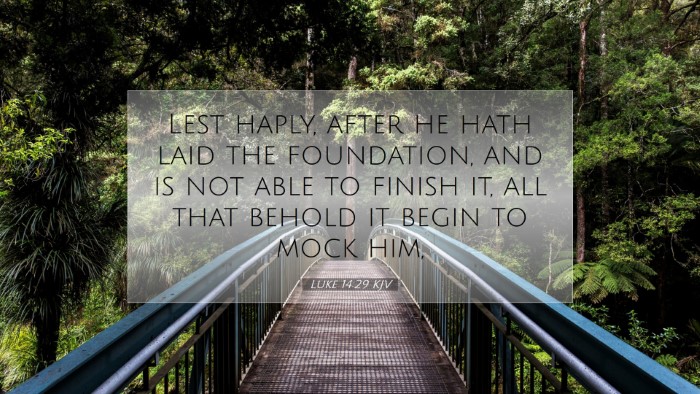Commentary on Luke 14:29
Luke 14:29 states: "For which of you, desiring to build a tower, does not first sit down and count the cost, whether he has enough to complete it?" This verse serves as a pivotal teaching of Jesus, emphasizing the necessity of considering the significant implications of discipleship.
Introduction
This passage is part of a larger discourse where Jesus addresses the cost of following Him. The metaphor of building a tower is particularly illustrative, as it conveys the seriousness and deliberation that should accompany the choice to commit to a life of discipleship. Public domain commentaries by Matthew Henry, Adam Clarke, and Albert Barnes provide profound insights that enrich our understanding of this verse.
Contextual Interpretation
The surrounding context reveals that Jesus was speaking to a great multitude (Luke 14:25). As He turned to the crowd, He made it clear that being His disciple requires total commitment. Commentary from Matthew Henry emphasizes that the Lord uses this parable to illustrate the imprudence of beginning a venture without due preparation and consideration.
The Cost of Discipleship
- Spiritual and Practical Costs:
As Albert Barnes points out, the labor of building a tower in the spiritual sense implies a life dedicated to Christ, which can demand sacrifices and trials. Individuals must weigh whether they can endure these challenges.
- Counting the Cost:
Adam Clarke asserts that the phrase “sit down and count the cost” denotes logical reasoning—considering both the temporal and eternal implications of one’s choices. This suggests a comprehensive evaluation of one's spiritual state and readiness to engage in the rigors of following Christ.
- Half-Built Towers:
Matthew Henry observes that beginning a task without finishing it leads to shame and ridicule. This metaphor translates into discipleship where abandoning the faith can cause spiritual scorn and hinder the progress of the Kingdom of God.
Applications for the Church
The implications of this scripture extend far beyond individual discipleship to community dynamics within the church. Albert Barnes mentions the corporate responsibility of church leaders to lead congregants in understanding the demands of their faith. This is critical in a culture that increasingly favors convenience over commitment.
Insights from Matthew Henry
Matthew Henry elaborates that this verse illustrates the need for foresight in spiritual matters. He argues that true discipleship involves meticulously analyzing personal motives for following Christ, such as genuine love and desire for transformation, rather than selfish ambition or superficial motives.
Insights from Adam Clarke
Adam Clarke emphasizes the symbolism of “building a tower” as indicative of the believer's spiritual growth. He asserts that proper foundations must be laid; similarly, believers are encouraged to develop a deep understanding of the Scriptures and their vocation as Christians before fully committing to the journey.
Conclusion
In conclusion, Luke 14:29 serves as a vital reminder for all Christians to evaluate their commitment to Christ seriously. The teachings derived from the writings of commentaries illuminate how one’s spiritual journey parallels the construction of a building—a process that requires planning, dedication, and perseverance.
Final Reflections
As we further engage with this scripture, we encourage pastors, theologians, students, and readers alike to consider deeply the costs associated with following Christ. Let us each sit down and count the cost, ensuring we are prepared to complete the towers of faith that we have begun to build.


